James Fortune ~ Igloo White
1966-1972
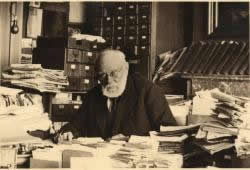 The Internet today is very interesting, well consider it started in 1934 with Paul Otlet, a Belgian, a peace activist who developed a "Radiated Library". I know little of this man, but I want to learn more. Let me say that he wanted to 'classify the world'. I am thinking he
The Internet today is very interesting, well consider it started in 1934 with Paul Otlet, a Belgian, a peace activist who developed a "Radiated Library". I know little of this man, but I want to learn more. Let me say that he wanted to 'classify the world'. I am thinking he
Paul Otlet
might have invented the hyperlink, if there had been a World Wide Web or Internet in 1934. He was for a networked world for sure.
 Some of the players in the late 1950s and 1960s were Rand Corporation ~ It received Government funds as did ARPA which was the precursor to today's Internet. Advanced Research Projects Agency or ARPA would receive Government funding also. President Dwight David Eisenhower would propose that the United States would use computers in defense. This was a direct result of the startling Russian launching of Sputnik in 1957.
Some of the players in the late 1950s and 1960s were Rand Corporation ~ It received Government funds as did ARPA which was the precursor to today's Internet. Advanced Research Projects Agency or ARPA would receive Government funding also. President Dwight David Eisenhower would propose that the United States would use computers in defense. This was a direct result of the startling Russian launching of Sputnik in 1957.
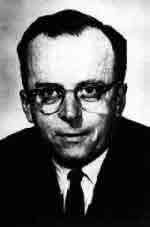 Dr. J. C. R. Licklider a psychologist with an interest in computers while working at MIT became involved with SAGE (Semi Automatic Ground Environment) defense project which used radar display consoles to help defend America from attack from Russia.
Dr. J. C. R. Licklider a psychologist with an interest in computers while working at MIT became involved with SAGE (Semi Automatic Ground Environment) defense project which used radar display consoles to help defend America from attack from Russia.
Licklider wanted computer scientists to develop computers for people to use to help them in daily life. He would establish within ARPA and Information Processing Techniques Office (IPTO) with a huge budget. A small number of Universities would be
J. C. R. Licklider
entrusted to be part of this early 'network', including Stanford, Carnegie-Mellon and Utah.
Time-sharing would be the concept of computer usage, and this writer remembers his undergraduate days of IBM punch-cards, and a time-sharing of less than 5 minutes of computer time to run Fortran programs in my first college computer class. It was hard to fathom how I could get all my computer problems solved in such a short period of time! But even in 1970 America our computers were fast enough to do most computer problems in microseconds. I ended with a surplus of time left. I will take my refund in dollars please!
With time-sharing IBM lagged behind General Electric with it's  System/360 computers in 1962. But by 1966 IBM would add to it's System/360 with it's time-sharing Model 67.
System/360 computers in 1962. But by 1966 IBM would add to it's System/360 with it's time-sharing Model 67.
(IBM 360 - Computer History Museum s1 005r)
During the early 1960s RAND Corporation started working on DistributedNetworks & Packet Switching. 1962 during the Cuban Missile Crisis it was determined that the United States needed not a decentralized communications system but rather a Distributed Network. This would be the earliest Internet, then to be known as ARPA. It was like a fish net where to get from point A to point B you had multiple routes. This is what would be necessary in case of an all out nuclear attack. A centralized AT&T phone system would fail immediately. The modern TCP/IP Internet would be the way Packets were sent. 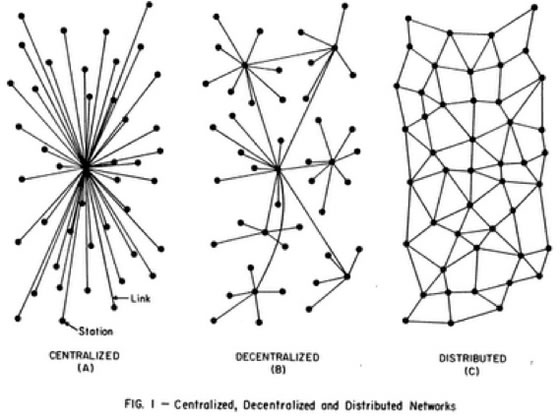 All you need to know is Distributed (or Packet Switched) is what the Internet is today. Looks like a Fishnet, and allows for multiple routes for your Internet signal to pass. The idea was in the case of a nuclear attack (oh yeah, you remember those school drills...) the Distributed Network will be the only one that survives! Courtesy Amber Case on Flickr
All you need to know is Distributed (or Packet Switched) is what the Internet is today. Looks like a Fishnet, and allows for multiple routes for your Internet signal to pass. The idea was in the case of a nuclear attack (oh yeah, you remember those school drills...) the Distributed Network will be the only one that survives! Courtesy Amber Case on Flickr
RAND had contracts with the Department of Defense and during the 1960s 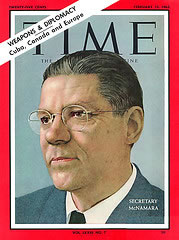 Robert McNamara would be the Secretary of Defense. An IPTO (Information Processing Technical Office) would connect university research centers such as MIT, Stanford and RAND.
Robert McNamara would be the Secretary of Defense. An IPTO (Information Processing Technical Office) would connect university research centers such as MIT, Stanford and RAND.
Checo report updates "IGLOO WHITE" which came from (MUSCLE SHOALS) IN 1966 when Secretary of Defense, Robert S. McNamara to begin a sensor detecting system on 1 Dec. 1967.
It was to be a line across Vietnam just below the DMZ at 17° latitude. The system went through several name changes including PRACTICE NINE, ILLINOIS CITY & DYE MAKER. Then 8 Sept. 1967, MUSCLE SHOALS and finally IGLOO WHITE (the white part referring to the white colored video lines on monitors either airborne or at the ISC center in Nakhon Phanom Air Base, Thailand) in June 1968.

Ho Chi Minh Trail
 Ho Chi Minh Trail to sense vibrations & sound of the enemy movements up & mostly down the trail to South Vietnam. 2.) Orbiting aircraft which received signals from the sensors & amplified them before relaying them miles away to Thailand at the 3.) massive ISC, nicknamed DUTCH MILL. The 13th Air Force known as Task Force Alpha (TFA) at Nakhon Phanom Air Base, Thailand. The computer,
Ho Chi Minh Trail to sense vibrations & sound of the enemy movements up & mostly down the trail to South Vietnam. 2.) Orbiting aircraft which received signals from the sensors & amplified them before relaying them miles away to Thailand at the 3.) massive ISC, nicknamed DUTCH MILL. The 13th Air Force known as Task Force Alpha (TFA) at Nakhon Phanom Air Base, Thailand. The computer,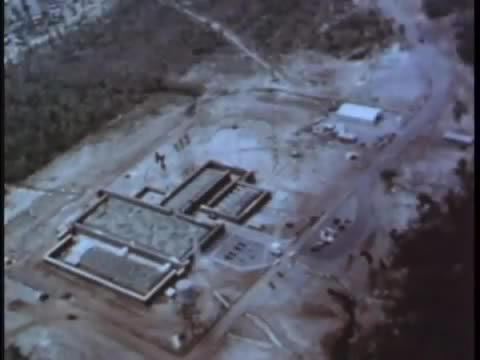
intelligence and personnel and technicians analyzed and processed the sensor data. The processed data would be sent back to Air Force strike forces.
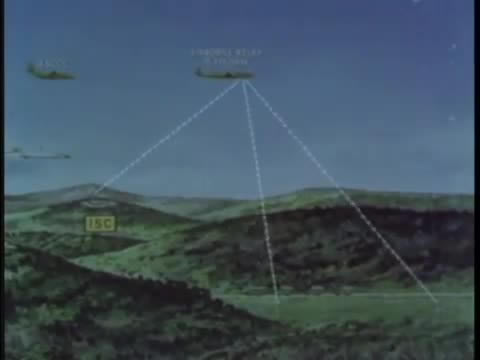
Sensors transmitted their data to EC-121 aircraft flying in an orbit close to the Ho Chi Minh Trail. The data was then automatically relayed to the ISC for its analysis.
